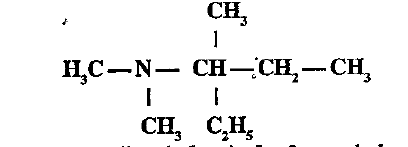Among halogens maximum oxides are formed bySolution in Odia
Fluorine
Chlorine
Bromine
Iodine
The correct Answer is:B
Step by step video, text & image solution for Among halogens maximum oxides are formed by by Chemistry experts to help you in doubts & scoring excellent marks in Class 12 exams.
Updated on:21/07/2023Topper's Solved these Questions
Similar Questions
Write the IUPAC name of following compound.

View SolutionWrite two uses of Bakelite ?
View SolutionAmong the halogens, fluorine differs considerably form the other members. The hydrides of halogens also differ in their properties.
Florine differs form the order halogens due to:
View SolutionAmong the halogens, fluorine differs considerably form the other members. The hydrides of halogens also differ in their properties. Which of the following halogens do not form polyhalide ?
View SolutionWhich halogen forms an oxyacid that contains the halogen atom in tripositive oxidation state?
View SolutionWhich halogen forms an oxoacids that contains the halogen atom in tripositive oxidation state ?
View SolutionWhich halogen forms an oxyacid that contains the halogen atom in tripositive oxidation state?
View SolutionDecreasing order of halogen to form oxide is
View SolutionBoiling pont of hydrogen fluride is maximum among all the halogen acid-explain.
View SolutionWhich of the following oxides of halogen has maximum oxidation state of halogen atom?
View SolutionThe halogen which forms maximum number of interhalogen compounds is
View SolutionThe maximum oxidation state that can be exhibited by a halogen in its second excited state
View Solution(A) : lodine is the only halogen that is naturally available in positive oxidation states
(R): Iodine is slightly electropositive among halogens .
View Solution(A) : lodine is the only halogen that is naturally available in positive oxidation states
(R): Iodine is slightly electropositive among halogens .
View SolutionWhich halogen forms an oxoacids that contains the halogen atom in tripositive oxidation state ?
View Solution
